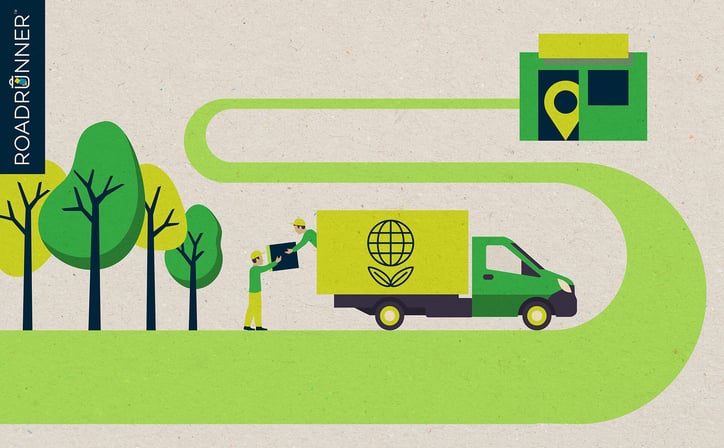Where are your company’s products made? Are the employees paid a fair wage? How are the raw materials sourced? In what ways are they transported to retailers and customers?
These questions deal with a company’s supply chain, and they’re being asked more often than ever. Consumers are choosing companies and products that make transparency and sustainability a priority at all levels. They’re also punishing those that turn a blind eye by taking their business elsewhere.
While there isn’t a “one-size-fits-all” approach to supply chain sustainability, there are some things your business can do to get a better handle on it.
Here's why supply chain sustainability makes good business sense
Companies participating in the UN Global Compact said the biggest challenge to improving sustainability is supply chain practices. More than 90% of the environmental impacts for most companies come from the supply chain. The SEC proposed new rules earlier this year to require certain businesses to report greenhouse gas emissions from supply chains.
The case for demanding sustainability in your supply chain keeps growing. It increases efficiency, promotes a higher ESG rating, reduces costs, generates new business opportunities, protects profits, and drastically reduces your impact on the environment.
Having a handle on your supply chain doesn’t have to be difficult.
Here are 4 steps you can take today to meet your supply chain sustainability goals.
![]()
1. Map out your supply chain
Just like conducting a waste audit for your business gives you an inside look into what is being thrown out, mapping out your supply chain opens a window with some vital information. A supply chain map can be a diagram or outline of all of the products bought and sold as well as all of the components that go into creating and distributing them. This map includes:
• Raw materials
• Supplier locations
• Storage warehouses
• Distribution centers
• Transportation methods and routes
• Retailer locations
While that’s not an exhaustive list, it does give you a better understanding of your supply chain. When a potential issue arises, you’ll be armed with the right information to make the best decision possible for your business and the environment.
![]()
2. Talk with your suppliers
You’ve heard the phrase it takes a village, right? That’s also the case for sustainable supply chains. Don’t think you and your business have to go it alone. Talking with your suppliers and getting them onboard with sustainable goals means you both have a shared mission to work towards. It improves your working relationship and is mutually beneficial.
Businesses across the globe also started implementing supplier surveys. This is where companies determine if a certain supplier is a good fit for their business. If there are shared values, it could be a great business decision.
Collaborating on sustainability initiatives can help your business achieve those goals. A 2019 report from the Carbon Disclosure Project’s Supply Chain Program found that 35% of members worked with suppliers on climate goals - a more than 10% increase from the previous year. Working together can be the difference maker in supply chain sustainability.
![]()
3. Choose the best packaging option
When a product gets delivered, what’s the first thing the customer sees? The packaging. The packaging says quite a bit about a brand’s commitment to sustainability. There are product packaging options that are biodegradable, compostable, and recyclable. These can replace things like plastics or polystyrene that end up in landfills in huge quantities.
There’s been a push to be environmentally conscious when it comes to how we package products. Choosing a sustainable packaging option that fits your business’s needs doesn’t have to be difficult.
READ MORE: 8 great sustainable packaging options and 5 to avoid
![]()
4. Clearly define your goals
What metrics will you be measuring to understand sustainable supply chain performance? Determining the correct variables to track is important so you can see what’s working and what needs improvement. Common variables include air quality, greenhouse gas emissions, energy use, and water-related issues. While there’s little agreement on what should be included in a metrics analysis, your business has the opportunity to track things that are relevant to your operation. Consider the impacts of your suppliers, manufacturers, distributors, and consumers when deciding what to track.
Again, armed with this information, you’ll have an even better idea of how your business is working to meet your sustainability goals.
Businesses that fail to incorporate sustainability into their supply chains face a number of consequences. They’re more likely to experience disruptions as a result of climate change. They face potentially lower ESG scores. Consumers may choose to take their buying power elsewhere to another company that chooses sustainability.
We’ve outlined only a few of the ways your business can start to add sustainability goals to your supply chain. Both large and small actions can have big impacts when it comes to your profits and protecting the planet.
SEE HOW ROADRUNNER CAN HELP YOUR BUSINESS REACH ITS SUSTAINABILITY GOALS TODAY!
